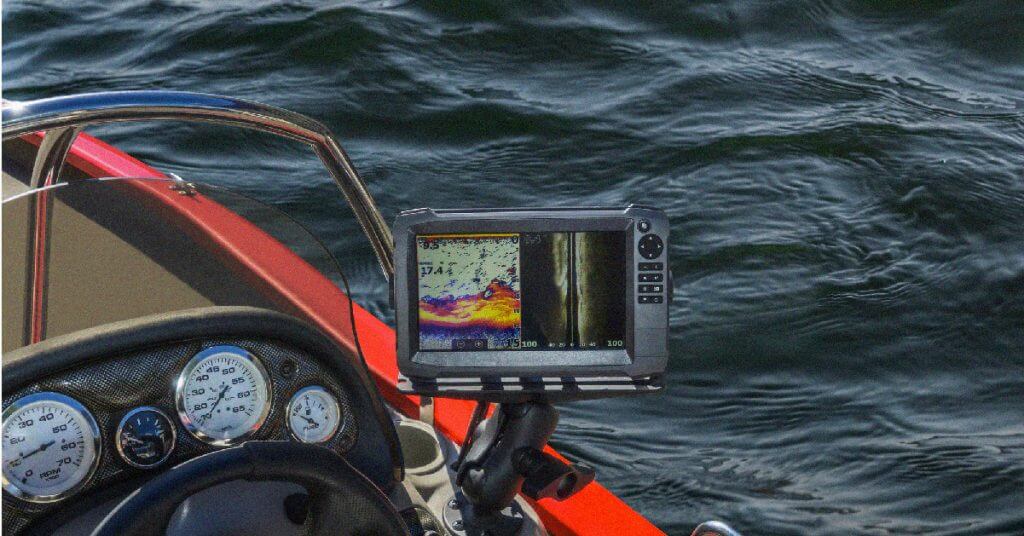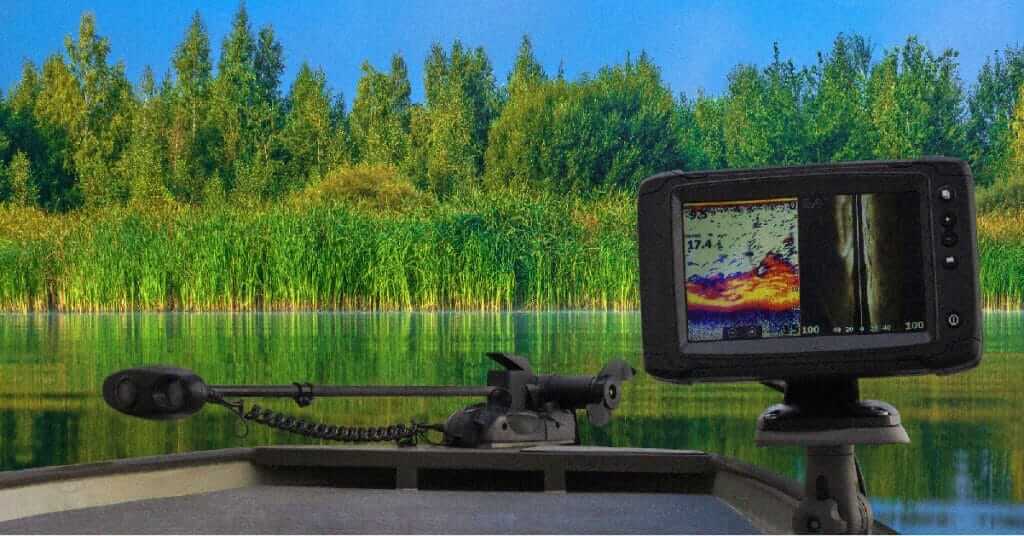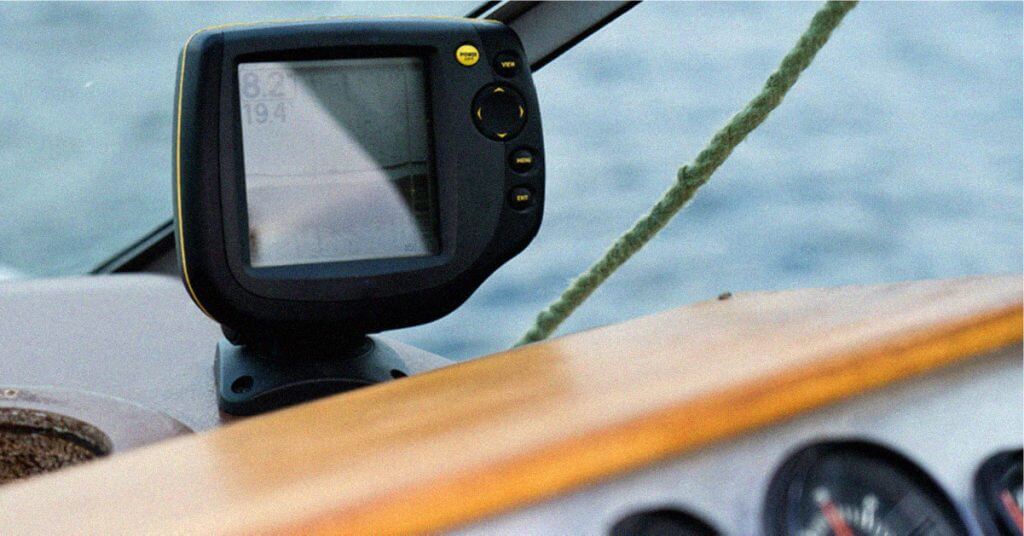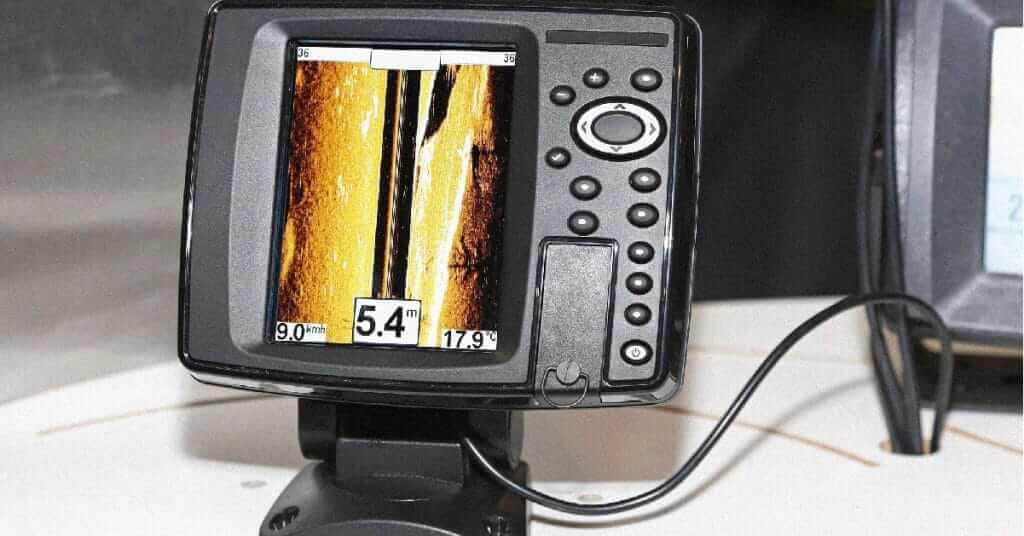Most Lowrance Active Target Live Sonar reviews cover the product, much as expected.
What they don’t tend to focus on is the live sonar technology that’s eclipsing everything else in the fish finder market.
It’s incredible technology and once you have your hands on it, there’s no going back.
Unboxing the Active Target is almost as fun as using it. The transducer and module have plenty of heft and bulk, but not in a bad way.
You get the immediate sense that you’re handling a sophisticated piece of hardware that’s durable and ready to hit the water.
Of course, Garmin and Humminbird have their own versions of live sonar, but Lowrance didn’t make its name from producing generic, everyday products.
Lowrance knows their business and as such, they’re now a giant in the industry. The Lowrance Active Target Live Sonar is no exception.
Table of Contents
Overview of Lowrance Active Target
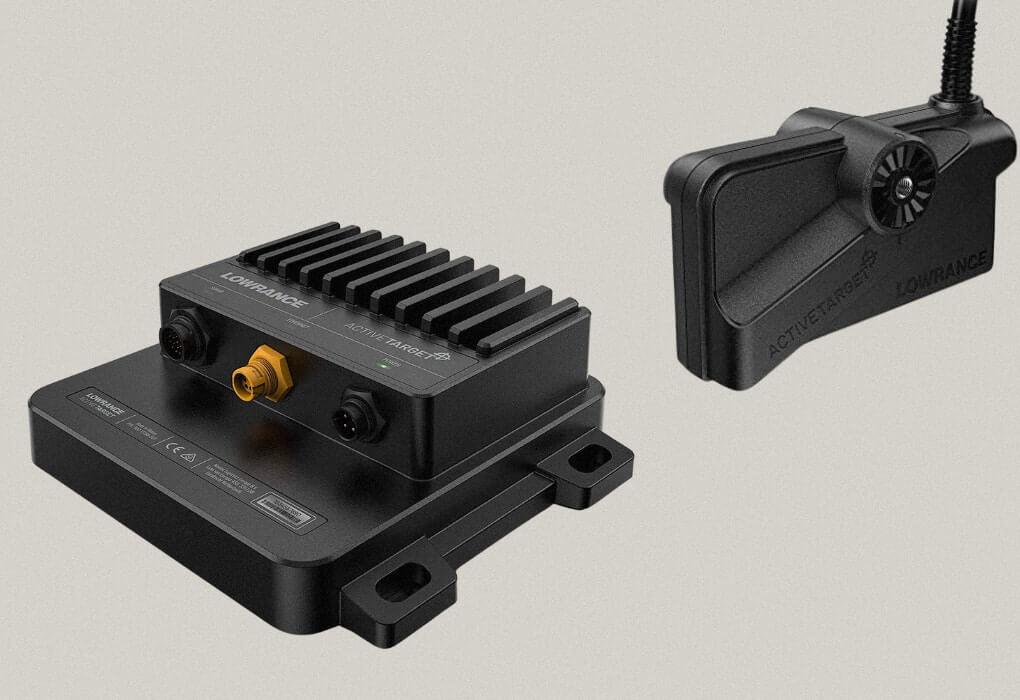
Some of the images the transducer feeds to the high-res multi-touch screen defy belief. The level of detail is incredible, and sometimes it reaches the point where you can visually identify the species of fish you’re looking at.
One of the reasons I like the Lowrance Active Target so much is the immediate versatility it offers. If the data return wasn’t immediate, it would kill the enthusiasm.
Slap this thing on a trolling motor, (especially a Ghost) and I get feedback where I aim it, when I aim it, all based on where I turn the trolling motor.
That’s all there is to it. The transducer is a single transducer capable of producing multiple views active imaging 3-in-1) in real-time and the module interprets the data for the visual display.
The key here is the capability and there is little doubt that Active Target is capable.
The Active Target transducer relays visual information so impressive that the tiniest details are rendered, including your lure, baitfish, the moment a fish strikes your bait, and the surrounding environment down to the smallest details.
The module is a high-performance processor. If you slapped it in a modern-day computer, it would be largely unimpressive but, the dual-core processor is overkill on the water.
It’s responsible for massive amounts of underwater information and it does so without any noticeable lag.
It’s also built to last, with temperature, water, shock, and vibration resistance built into its shell.
Compatibility – Lowrance Active Target Compatible Units
Lowrance was smart to include as many of their other units as possible for compatibility purposes.
While some anglers might already own some of these fish finders, the only useful part to combine with the Active Target system is the head unit (fish finder/display unit).
The Active Target system doesn’t work without both the module and the transducer.
Fortunately, that means you can grab the Active Target system and then choose your own head unit. Lowrance sells some fish finder display screens individually (without their respective transducers) as well.
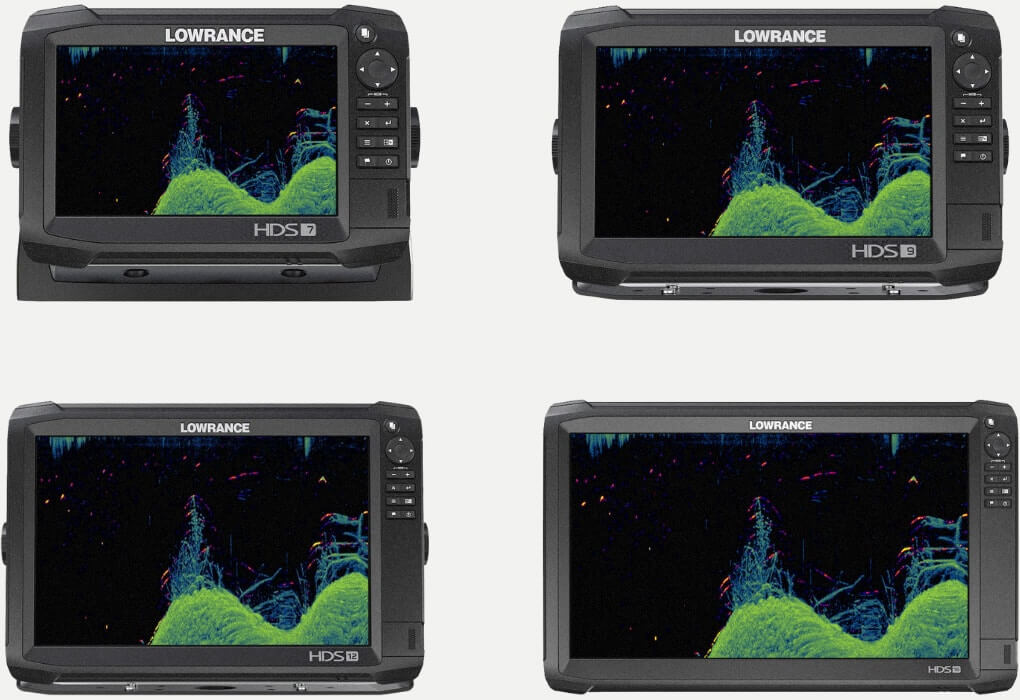
That makes life so much easier, doesn’t it? I’ve often found that it’s far more affordable to just buy an HDS Carbon Unit (for example) without the usual transducer and module.
You should also keep in mind that no matter what you pick, it will probably need a software update to get it up to spec with the Active Target.
- HDS Carbon 7
- HDS Carbon 9
- HDS Carbon 12
- HDS Carbon 16
- Elite FS 7
- Elite FS 9
- HDS-7 Live
- HDS-9 Live
- HDS-12 Live
- HDS-16 Live
No matter which of the above units you choose to go with, you’ll have to download the appropriate update for the unit to work with Active Target. An SD card is a simple way to download and install the update.
I just used a micro SD card (you can get a standard SD card sleeve if your PC doesn’t accept a micro), went to the Lowrance downloads page, selected ActiveTarget and English from the two dropdown menus, and downloaded ActiveTarget software 22.1.
Once you’re done, your display unit will recognize the Active Target, and you’ll follow a series of on-screen prompts to configure everything.
It’s not a convoluted process, just something you have to do no matter which unit you go with.
Lowrance Active Target Installation
How you mount the transducer matters. It has a down view, a forward view, and a scout view. You can get the down and forward views by mounting it sideways, with the barrel mount, on the trolling motor.
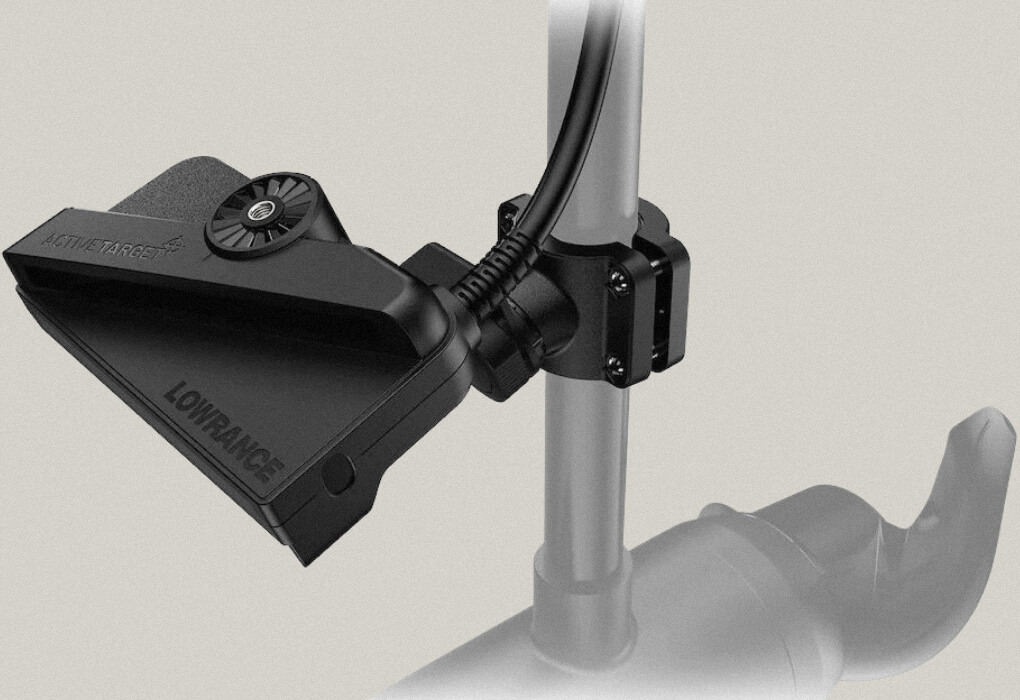
If you mount the transducer on top of the barrel or use the shaft mount, you open up the scout view option and your choice of the other two.
All of the mounting hardware is there, so you don’t have to worry about making extra trips down to the hardware store to pick up the necessary bolts and whatnot.
You’ll obviously need a solid battery to power the module and display unit.
The good thing about this stuff is there are so many options for you if you want to mount everything. The transducer mounts on the trolling motor, and it’s best if the trolling motor itself is a bow mount.
Other than that, the cables that come with the Active Target system are long enough to grant you a degree of customization.
I’ve found that lithium-ion batteries are a must when fishing out of my kayak. I’ve used lead-acid before and the things are so heavy that it significantly reduces the weight possibilities for my other gear.
Lithium-ion batteries are lightweight and it’s simple to coil your cables in with the battery in a medium to large storage space.
The Lowrance module is designed with the input and output ports on top, so it’s easily accessible, even if you have to store the module in a tight spot when you hook it up.
The Active Target system is designed for a simple setup with a descriptive guideline for piecing everything together.
You’ll need to get your software from Lowrance’s website, and some of the displays will require an update for themselves along with the latest Active Target firmware.
Features and Benefits of the Lowrance Active Target
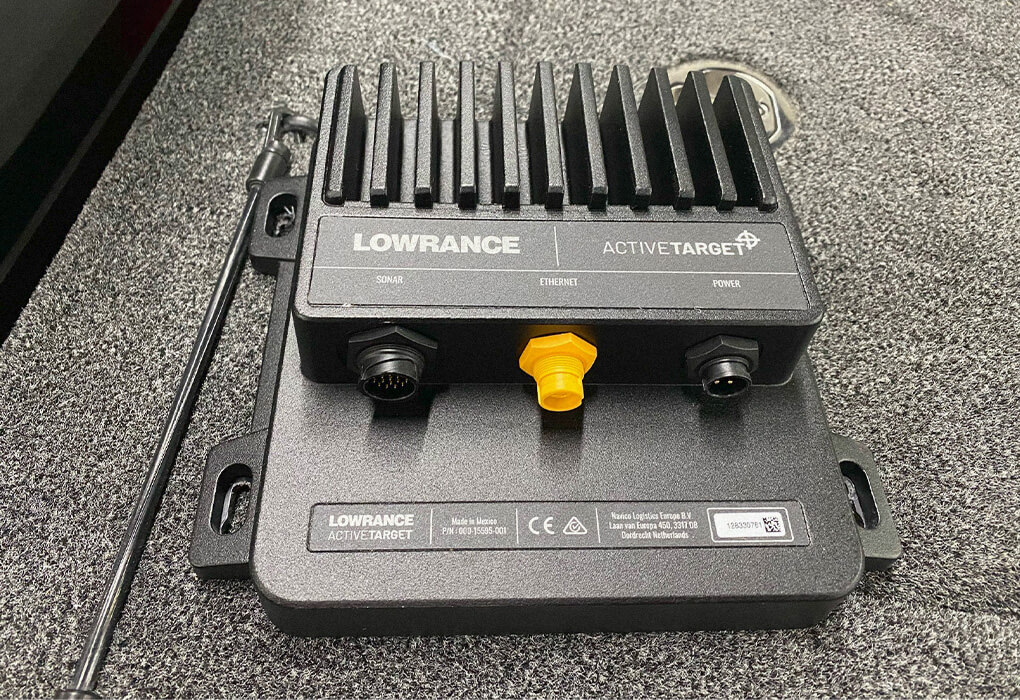
With the Active Target, an angler can take advantage of active mapping, which provides visual information of the underwater topography, including submerged structures, rocks, tree limbs, roots, and you name it.
The range of the Active Target’s sonar is 200’, with a 135° x 18° beam that might seem narrow in height angle until you consider its installation advantages.
On a trolling motor, it scans as you turn the motor, and since the feedback is immediate, that 18° becomes negligible in a hurry.
The image quality and high resolution are so exceptional that watching fish take my bait is commonplace.They say patience is what makes an angler.
Sure, but there’s nothing wrong with a little underwater entertainment while you wait.
Of course, the image quality and the detailed richness of the feedback are easily the most attractive selling points. But there is a lot more to the Lowrance Active Target than just resolution.
- Forward view, down view, and scout mode
- Live images
- Works with Elite FS Fishfinder, HDS Live, and HDS Carbon Series
- Comes with multiple trolling motor mounts
- Active mapping
- IP67 weather/water resistance
- 1.5A power consumption
- Power cable, fuse, and ethernet cable included
With your head unit of choice, there’s not much the Lowrance Active Target can’t cover, from big schools of fish to individual fish movements and behavior. It eliminates much of the guesswork and keeps you on the fish.
Alternatives
Neither Garmin nor Humminbird will take the Lowrance Active Target challenge sitting down, and both have something of their own to offer. Plus, Lowrance has already one-upped itself with the Lowrance Active Target 2.
Garmin LiveScope Plus
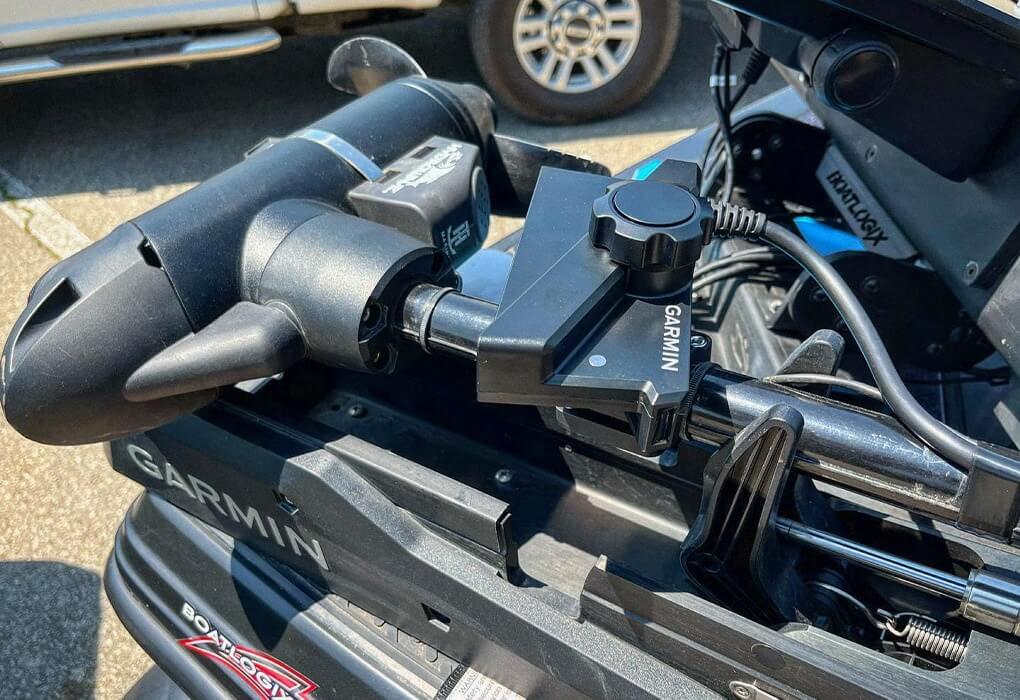
Garmin is to GPS what the ocean is to water. The two are synonymous, and you rarely hear about one without the other.
Many of the features found in the Lowrance Active Target system are here as well, just under a different name.
For instance, the Scout View is one of the three viewing options in ActiveTarget, and it allows you to see a wide area around your boat. Garmin LiveScope has the exact same thing, only it’s called “Perspective Mode.”
One thing that separates the Garmin LiveScope from the Lowrance Active Target is Garmin’s AHRS (Attitude Heading Reference System).
The AHRS is designed to stabilize images in rough water, so you get a pristine, clear view even when the white caps are really kicking.
Garmin’s Panoptrix LVS32 transducer is widely considered to be one of the best on the market and it’s a personal favorite. Unfortunately, the LiveScope often takes a hit for being difficult to install and I’m a little put off by the compatibility limitations.
Humminbird Mega 360
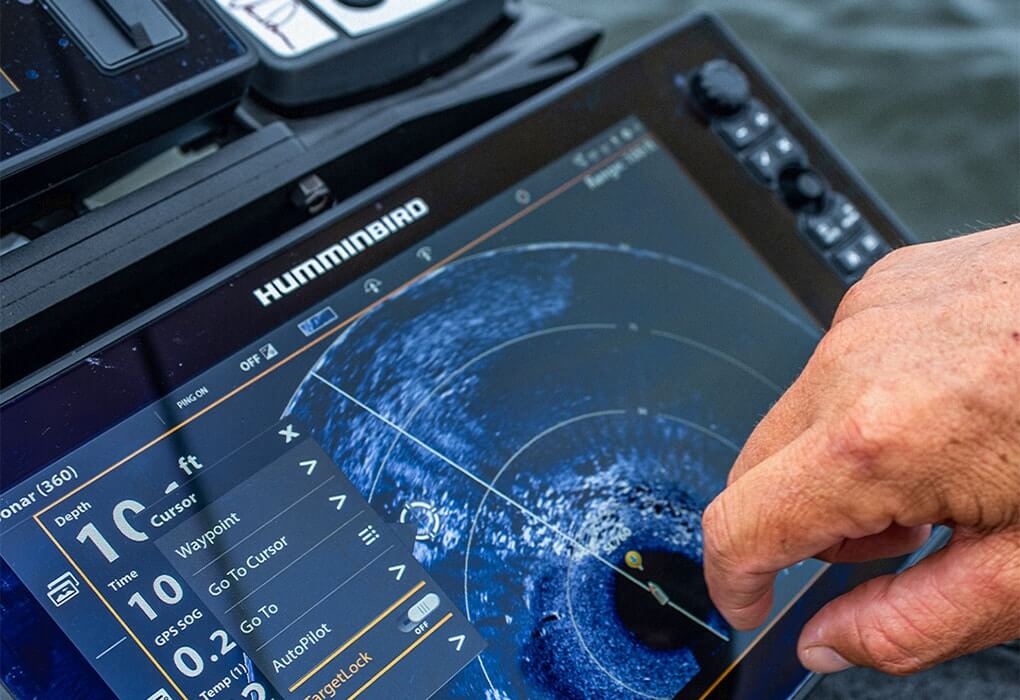
Humminbird has made a name for itself in the fishfinder industry, and they are known for manufacturing some of the highest-resolution units.
I’ve found that, after unboxing anything under the Humminbird brand, it looks so nice I’m hesitant to install it.
The 360 in the name implies 360° imaging, which is exactly what you get in real-time.
It’s compatible with the Humminbird Solix series and the Helix series, both of which are fantastic even without the 360° scanning transducer.
The Mega 360 is capable of MHz range and allows for extremely detailed imagery. The only drawback is that it’s limited to 125’, versus the 200’ of the Garmin LiveScope and Lowrance Active Target.
The waypoint marking feature is incredibly accurate. No matter how much your bow moves, a glance down at the screen will show you the precise spot to cast.
Because of that on-demand waypoint accuracy, the Mega 360 is now a staple in fishing tournaments and casual fishing as well.
Lowrance Active Target 2
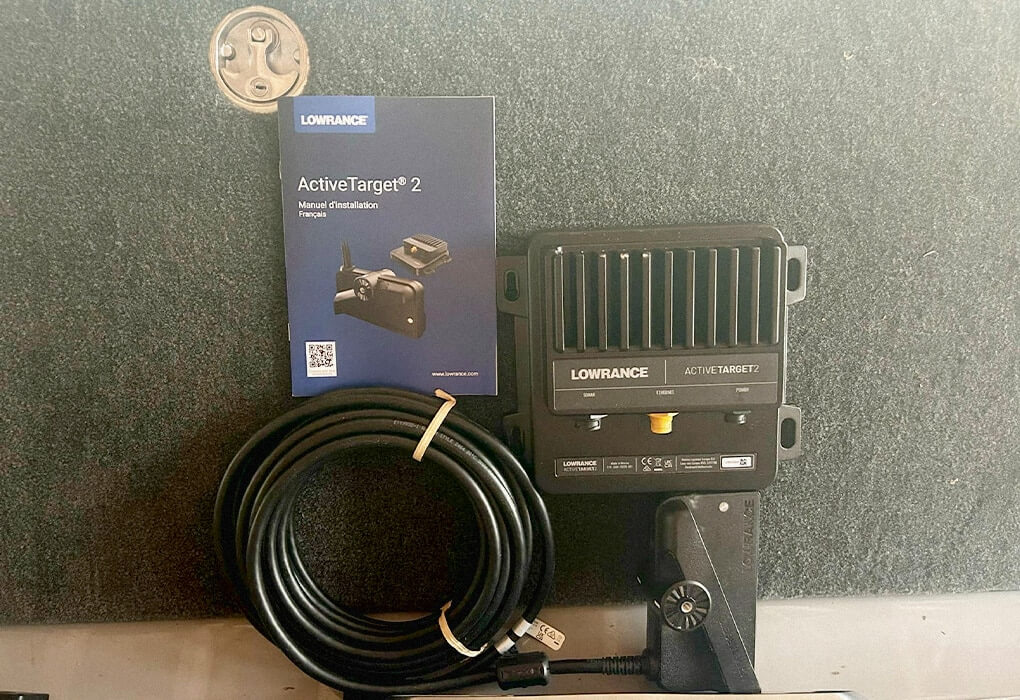
The new ActiveTarget is essentially the same as the old, with a few feature upgrades that make it a worthy alternative to the original.
However, if you’re looking to save a few bucks, there’s not a large enough difference between Active Target 1 and 2 to make the second a “must-have.”
Active Target 2 comes with three additional views. They’re the same views but, at the same time, not quite the same.
What Active Target 2 does is combine the down, side, and scout views from one transducer with a second, active transducer, for a total of six views.
One of the things I really like about Lowrance’s approach with the ActiveTarget series is how they maintain compatibility options.
The ActiveTarget’s successor is compatible with all of the same units the original is. Now that the HDS Pro is out, ActiveTarget 2 is compatible with it as well.
Frequently Asked Questions
Does Lowrance Active Target show depth?
The Lowrance Active Target does show depth, as well as temperature. However, in water as shallow as 6’ or less, the forward view loses clarity.
For the best results, use the forward view only when the water is deeper than 6’.
What is Lowrance Active Target compatible with?
Lowrance Active Target compatible units include the HDS Carbon Series, the Elite FS Series, and the HDS Live Series.
The Active Target 2 is compatible with those three in addition to the new HDS Pro Series.
What is the warranty for Active Target Live Sonar?
According to Lowrance, their products are guaranteed free of defects in workmanship and material for 24 months, starting from the date of purchase or professional installation.
What is the battery life on Lowrance Active Target?
Since the Active Target system is powered by your own choice of 12v marine/RV battery, it depends.
With a lithium-ion battery, 12v10Ah, you should get 6.7 hours at full power, using the HDS-12 Live.
That time extends to over 11 hours if you take advantage of power-saving features on the head unit.
Final Thoughts
The Lowrance Active Target Live Sonar system is an exceptional transducer and power module setup that will take your head unit and fishing capabilities to the next level.
The ultra-wide views, chartplotters, transom mount, and image clarity are exceptional.
There is some competition out there, however, and Lowrance Active Target does have some room for improvement.
There’s no such thing as the perfect fish finder setup but Lowrance’s Active Target comes pretty close.
The first time you watch recognizable crappie, blue gill, or bass hit your bait (which is also visible), you’ll be sold on the unit’s capabilities.

